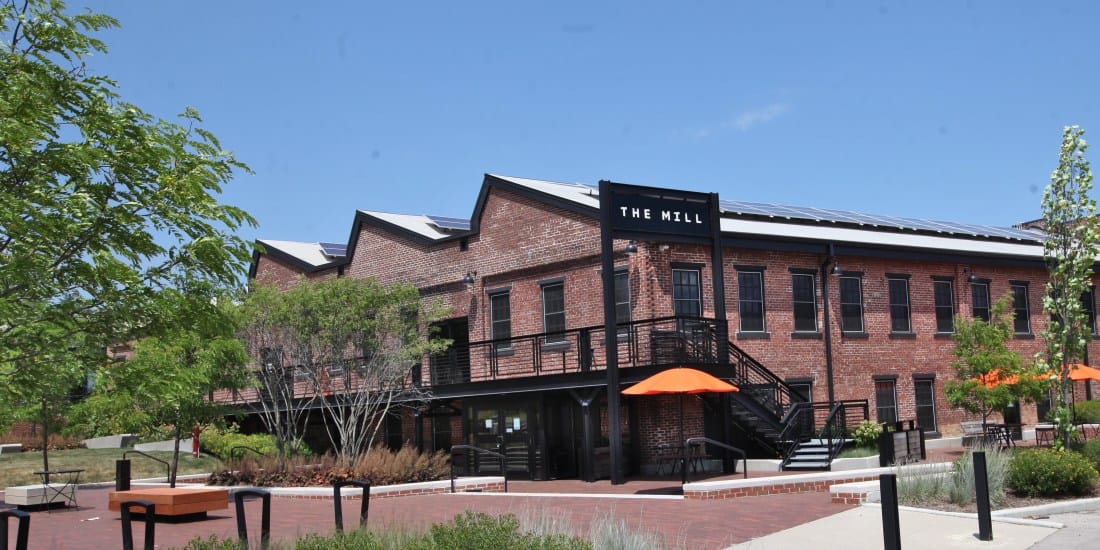Bloomington RDC hopes to seal deal on smell for some offices at adaptive reuse coworking project


Bloomington’s redevelopment commission (RDC) is hoping that a $12,000 contract with Ann-Kriss, Inc.—to paint and seal some brick and concrete surfaces in an old industrial building—will wrap up an issue with lingering odor that has beleaguered part of the roughly $5.5 million adaptive reuse project.
According to Bloomington’s director of economic and sustainable development, Alex Crowley, the issue with the unpleasant smell is limited to the confined space inside some of the interior offices. It has apparently not been a problem throughout the relatively open layout of the former dimension mill of the Showers Company furniture factory.
The building, which is located north of city hall in the Trades District, launched as a coworking space in 2018. The RDC leases the building to the Dimension Mill, Inc., which is a nonprofit formed to operate it. Under the terms of the lease, DMI is paying the RDC $75,000 this year. Next year that amount goes up to $100,000.
The sealing work was described by Crowley at Tuesday’s RDC meeting as the final step of some measures that had been recommended by VET Environmental Engineering, after the company conducted some indoor air testing in early 2020 and again in early 2021.
VET also recommended that a radon mitigation system be installed, which the RDC approved at a cost of about $10,500. Assistant city attorney Larry Allen told RDC members on Tuesday that the radon levels did go down, but that had not helped with the odor problem. Radon itself is odorless.
To mitigate the odor, the main recommendation from VET was to install an improved HVAC unit. The RDC approved the cost of the improved HVAC system at a cost of around $26,000.
Crowley told RDC members on Tuesday that the work they were approving that day would entail sealing the brick surfaces and painting some areas around the brick. Allen added that the concrete floor would also be sealed as part of the work.
About the source of the odor, Crowley said all of the experts who have taken a look at the situation are “stumped.” But the smell is thought to be a legacy problem from old machinery that was used in the factory, Crowley said. It’s possible some materials might have have seeped into the wall and the floor, Crowley said.
But far as a definitive answer, Crowley said, “It’s a total mystery.”
President of the RDC, Cindy Kinnarney, expressed some concern about the added cost. “I think it’s just a challenge to keep pouring more and more funds at the problem with no end in sight.” She also wanted to know what the next step would be, if the sealing work does not solve the problem.
Allen indicated he thinks the HVAC system might have already addressed the issue “I can’t tell you that the odor is still lingering in the office,” Allen said. He called the painting and sealing work a “belt-and-suspenders” approach.
Crowley was not certain if the issue had been resolved by the HVAC system. He indicated that the odor had not been an inconsequential issue: “It has been a real problem for tenants,” Crowley said.
Crowley said he hopes the painting and sealing work “will be the end of this.”




Comments ()